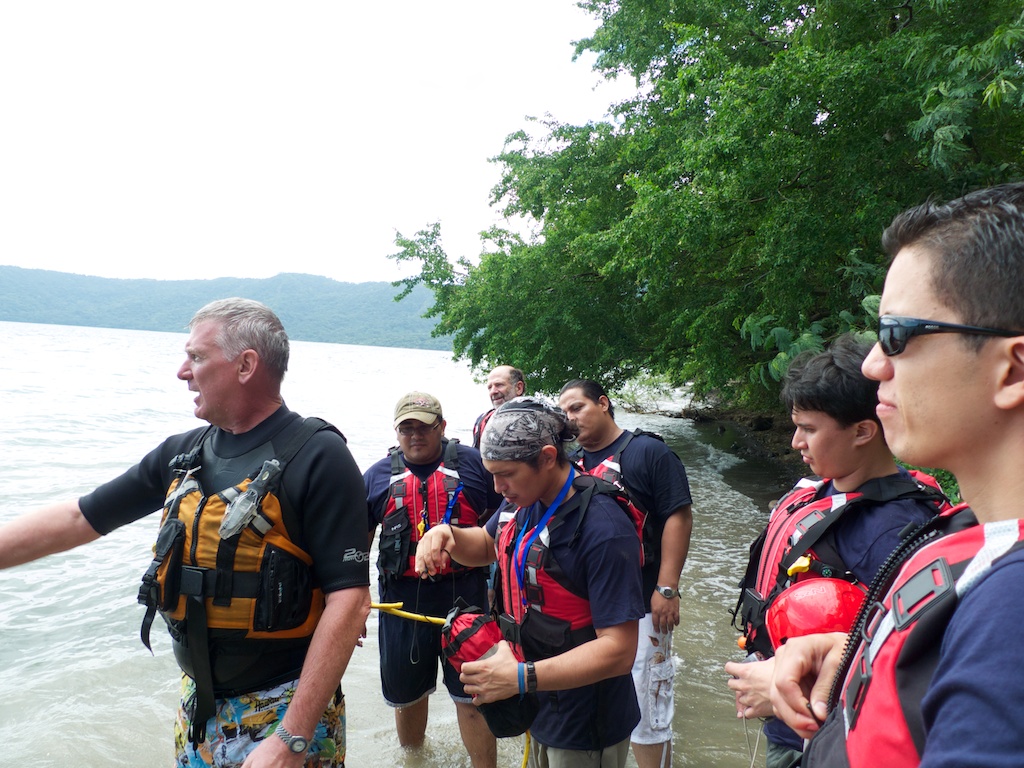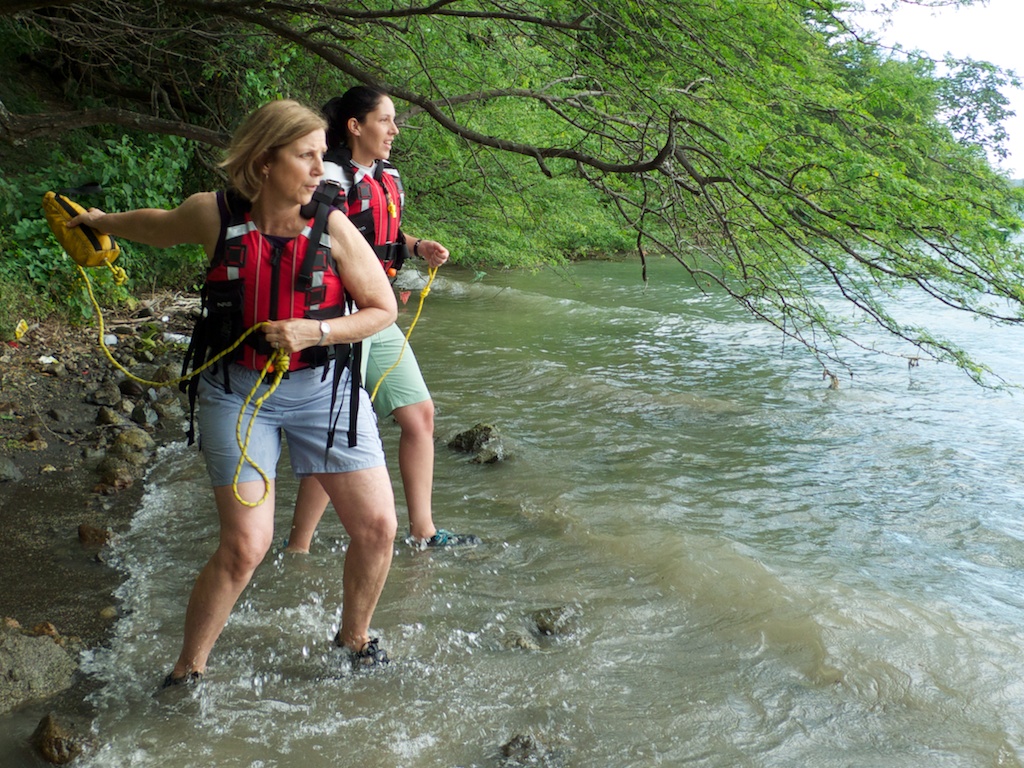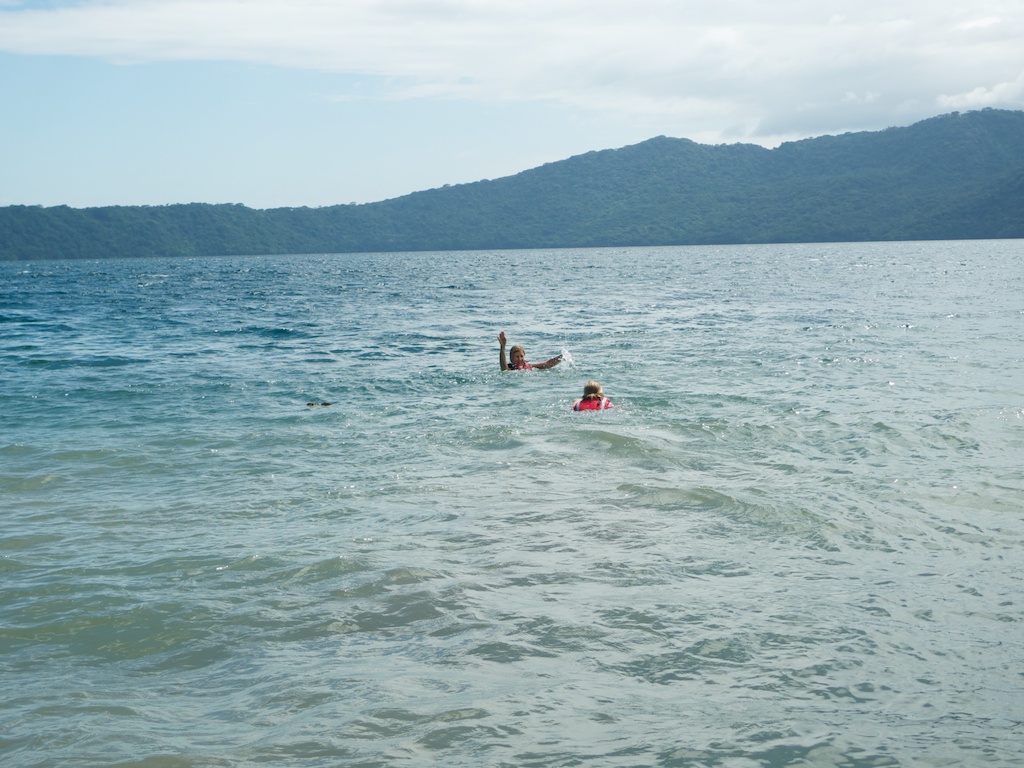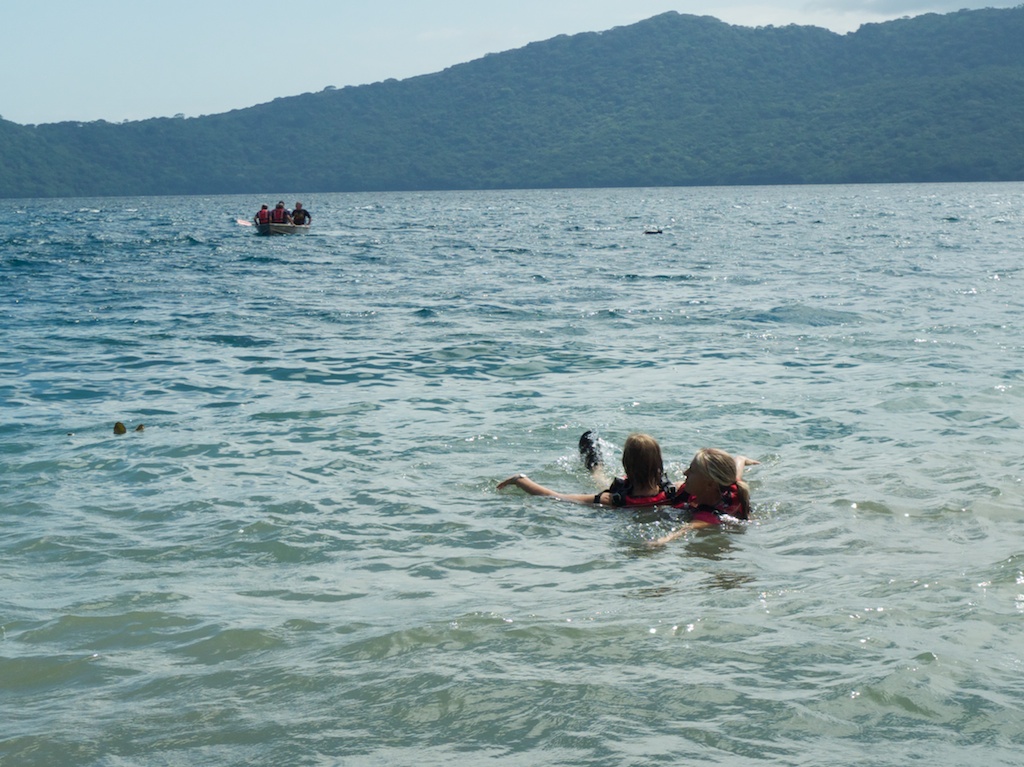Being set up in the house with all my computer equipment finally reassembled means I can do what I’ve been wanting to do for quite a while: fill you in on more of the disaster response trip I did with World Vets in Nicaragua. I think the last time I had left it, we had just spent a day in the classroom learning disaster response techniques and were about to put our skills to the test.
Day 2 was the water course. I’m not the strongest swimmer, so this was the part I was a wee bit nervous about. As you will see, this was with good reason. The universe does not think I should do a lot of things in the water. But first, a lovely picture from our tour of Granada on the first day to set the stage for calm:
You can see why Granada was a favorite sacking locale for centuries of marauding pirates.
But I digress! We spent our water day at Laguna de Apoyo, a blessedly warm and quiescent lake in the crater of a volcano. Many disaster response training sessions focus on swift water rescue, which adds layers upon layers of difficulty when you are dealing with the mechanics of walls of water moving at different rates down a riverbed. Before you get there, you need to know the basics, such as how to put on a life jacket. You’d be surprised at what a complex piece of equipment a professional quality life preserver is. It’s like strapping into an extremely padded corset.
“Double check everything,” stressed our instructor Kim. “Make someone else check it. ALWAYS. SAFETY FIRST.” And I agreed, so I did just that, the first time.
By the third time I took the jacket off and on, sharing it with another participant, I was confident in my buckling abilities so I bypassed the check mechanism in order to get to the good stuff. Like how to throw a rescue rope.
You can throw it overhand, underhand, or sidearm, depending on your strength and accuracy. We were lobbing those ropes like pros in no time.
Having satisfied himself that we weren’t going to strangle ourselves accidentally, Kim divided us into teams. While one team got on a boat to practice rescuing a pet from the boat, the remaining group would stay on shore and take turns being a victim, throwing the rope, and swimming out to the victim to swim him or her back in. The person doing the swimming would do it both unassisted (you’re on your own) and assisted (meaning you are attached by a rope to someone on shore, who pulls you back in.)
First, I swam out to my victim and pulled her back in. Being a kind person she decided not to feign being panicked, hitting me, or trying to crawl on my back, which I guess isn’t that uncommon. We made it back in safely.
Next, I hooked the rope up to the carabiner on the back of my vest, and we re-set the stage for me to have an assisted rescue.
I reached my victim.
I waited for the reassuring pull of the rope.
“Man, they’re lagging,” I said. We floated about for a minute or two. I heard yelling.
“WHAT?” I said to the people on shore.
“This is the part where you both die,” they said. It was at this time I noticed the carabiner, with rope still attached, floating about 20 feet away, nowhere near me or my life vest. Again, good thing we were in a lake, right? As you can see, it was fortunate we were a) in 5 feet of still water and b) within rowing distance of Team B, had this been an actual emergency.
I swam sheepishly into shore on my own power, wondering what sort of defective piece of equipment I had been handed.
And of course, when I got to shore and assessed the breakdown, it turns out my dumb self had neglected to insert Tab A into Slot B on the waist belt buckle, meaning as soon as there was any tension, it popped right open, pulling the threaded carabiner with it.
There are routines you do because you’re trained to do them- counting sponges after surgery, for example, or double checking stumps for hemostasis before closure. Or in this case, make someone check all 15 buckles on your life preserver, every time. Because it’s not about making sure your chest is comfortably contained- it’s the difference between getting pulled to shore and screaming in frustration as you and your victim swirl off the waterfall downstream. Which is the stuff of my nightmares. Actually it should more appropriately be the stuff of anyone else’s nightmares, should they find themselves drowning and see me headed in to save them.
Lesson: learned. Don’t worry. It won’t happen again.











So, if we’re ever out swimming with you we should bring our own noodles? 😉
Wow that’s quite the serious lesson! I guess those safety procedures are in place for a reason.
When I was 12 and weighed about 80 pounds, I took senior lifesaving through the Red Cross. I was a good swimmer and knew how to rescue a panicked swimmer. I was fearless on test day. My “victim”was a 16 year old boy who took his role seriously. I was totally overwhelmed by his “desperation”. At the time I thought he was mean and I think I even cried. But I learned a valuable lesson.There is no room for complacence or cockiness in water rescues. The rescuer can become a victim very quickly!